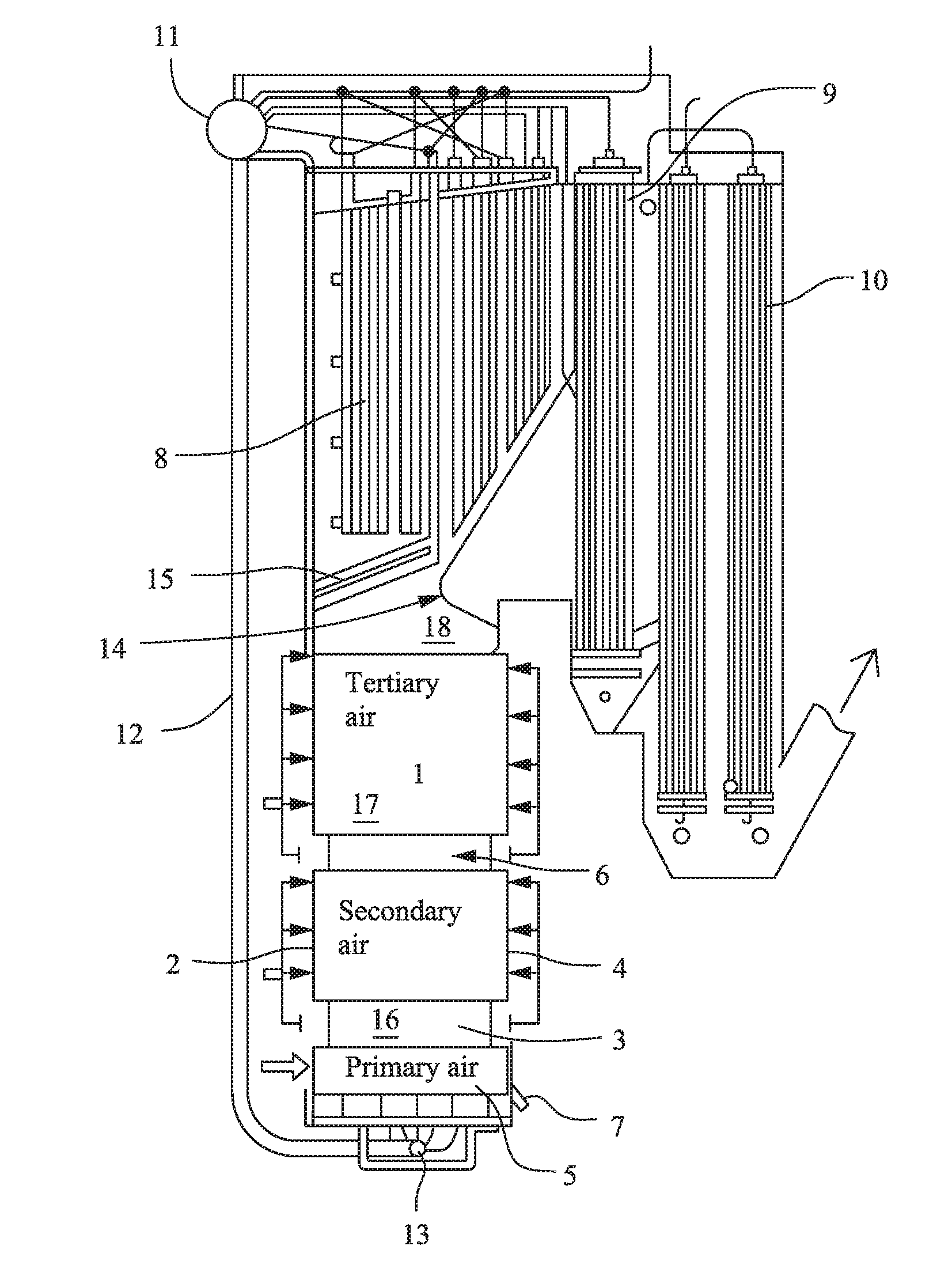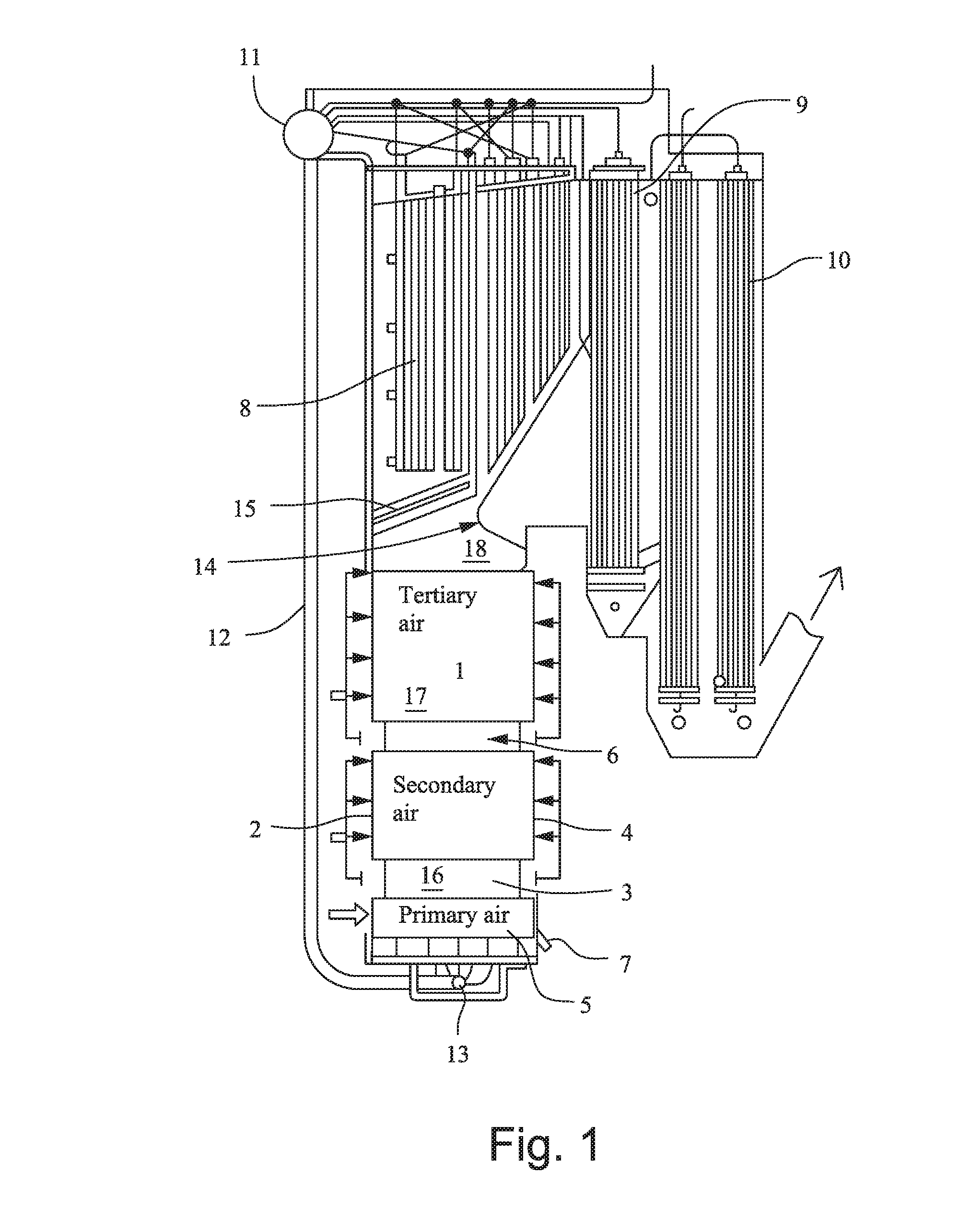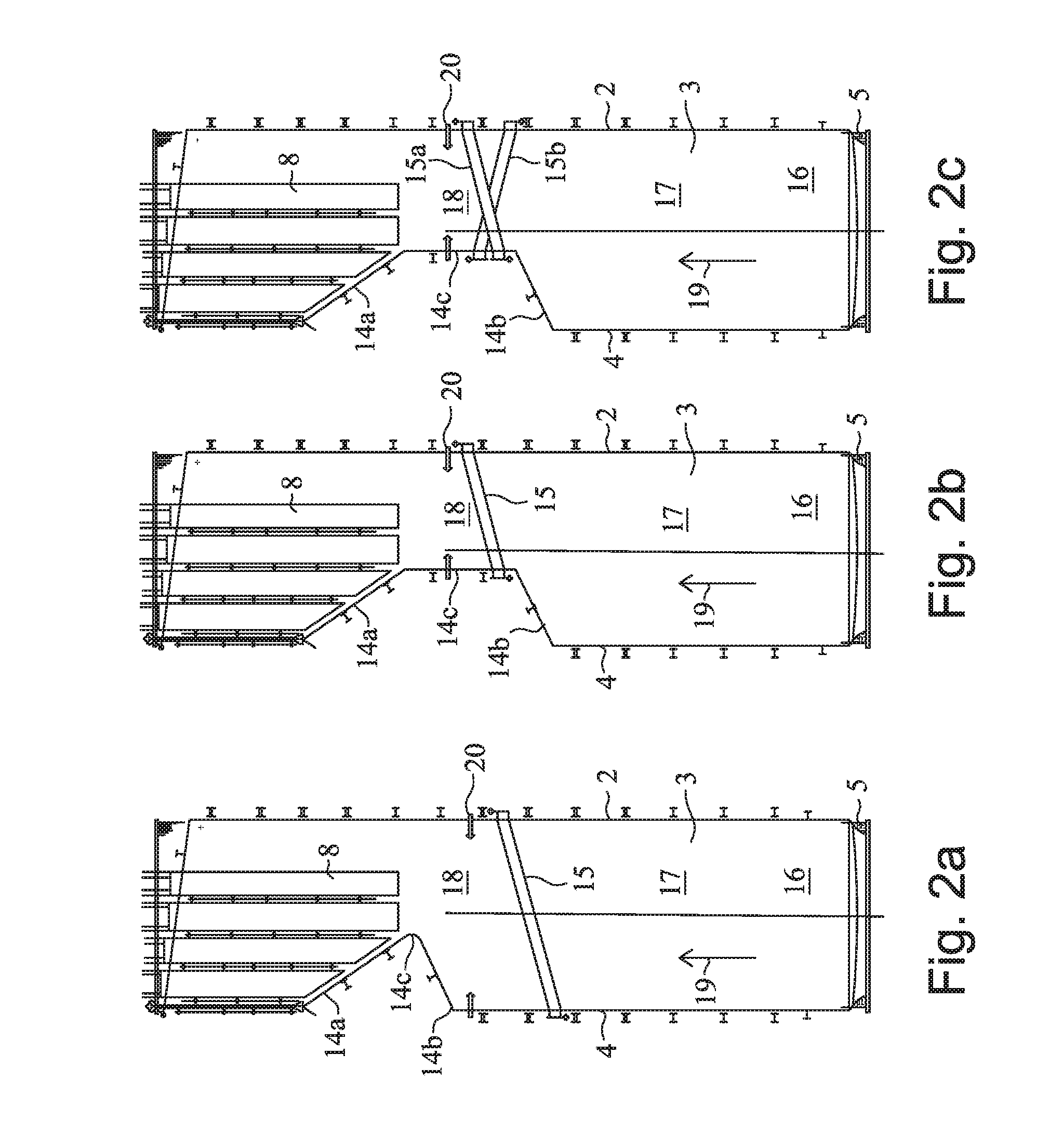Method of reducing flue gas emissions and a boiler
a technology of flue gas emission reduction and boiler, which is applied in the field of reducing flue gas emissions and a boiler, can solve the problems of difficult to create optimal conditions for sncr in several combustion apparatuses, shifting and narrowing of temperature windows, and the operation of each variation is limited to precisely determined conditions, so as to achieve efficient and more economical effects
- Summary
- Abstract
- Description
- Claims
- Application Information
AI Technical Summary
Benefits of technology
Problems solved by technology
Method used
Image
Examples
Embodiment Construction
[0047]FIGS. 2a-2c illustrate the construction of a recovery boiler having a furnace defined by water tube walls: a front wall 2, side walls 3 and a rear wall 4, as well as a bottom 5 formed of water tubes. Superheaters 8 of the boiler are located above the furnace.
[0048]A lower part 16 of the furnace, where the combustion of waste liquor mainly takes place.
[0049]A middle part 17 of the furnace, where the final combustion of gaseous combustible substances mainly takes place.
[0050]An upper part 18 of the furnace
[0051]A superheater area 8, wherein the saturated steam exiting the steam drum is heated into (superheated) steam having a higher temperature. A so-called screen tube system 15 is provided in the flue gas flow direction upstream of the superheater zone above the bullnose.
[0052]Flue gas generated in the furnace flows upwards into the upper part of the furnace and further to other heat recovery parts of the boiler, such as superheaters 8. The main flow direction of the flue gas i...
PUM
| Property | Measurement | Unit |
|---|---|---|
| temperature | aaaaa | aaaaa |
| temperatures | aaaaa | aaaaa |
| temperature | aaaaa | aaaaa |
Abstract
Description
Claims
Application Information
 Login to View More
Login to View More - R&D
- Intellectual Property
- Life Sciences
- Materials
- Tech Scout
- Unparalleled Data Quality
- Higher Quality Content
- 60% Fewer Hallucinations
Browse by: Latest US Patents, China's latest patents, Technical Efficacy Thesaurus, Application Domain, Technology Topic, Popular Technical Reports.
© 2025 PatSnap. All rights reserved.Legal|Privacy policy|Modern Slavery Act Transparency Statement|Sitemap|About US| Contact US: help@patsnap.com



